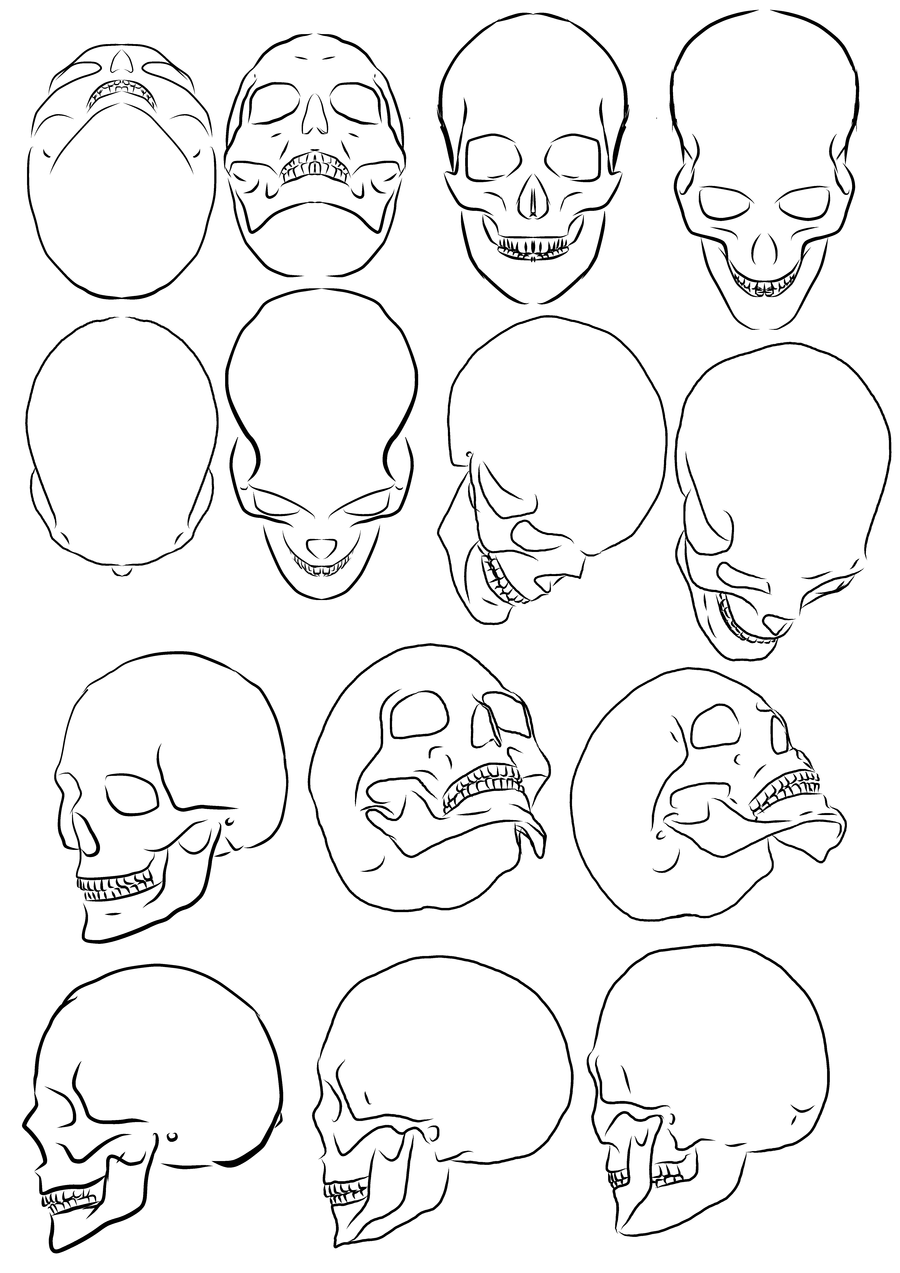
The human skull, a complex and captivating structure, has long served as a source of fascination for artists. Its intricate forms and symbolic weight offer a compelling subject for artistic exploration. From anatomical studies to expressive illustrations, understanding the nuances of cranial anatomy is key to creating compelling and realistic artwork. This guide delves into the art of skull drawing, providing a comprehensive resource for artists of all levels seeking to master this challenging yet rewarding subject.
Why draw skulls? For artists, the skull provides a foundational understanding of human anatomy, especially the head and face. Mastering the skull's structure allows for more accurate portrayals of facial features and expressions. Beyond anatomical studies, the skull holds deep symbolic meaning across cultures, representing mortality, power, and transformation. This rich symbolism makes the skull a powerful subject for artistic expression.
The history of skull depiction in art dates back centuries, featuring prominently in various art movements and cultures. From vanitas paintings of the 17th century, symbolizing the fleeting nature of life, to modern graphic design, the skull remains a ubiquitous motif. Its enduring presence highlights the enduring fascination with its form and symbolism.
Representing the skull accurately requires a deep understanding of its underlying structure. Key anatomical features, like the cranium, mandible, zygomatic arch, and orbital cavities, must be carefully observed and rendered to create a convincing likeness. This understanding can be gained through studying anatomical diagrams, 3D models, and real-life specimens (if accessible). Understanding the relationships between these elements is crucial for creating believable depictions.
One of the main challenges in drawing the human skull is capturing its three-dimensional form on a two-dimensional surface. This involves understanding perspective, shading, and light source to create the illusion of depth and volume. Practicing with different angles and lighting conditions is essential for developing this skill.
Several techniques can be employed to effectively render the skull. Pencil sketching allows for detailed study and subtle shading. Pen and ink can create striking, graphic representations. Digital painting software offers a wide range of tools and techniques for exploring different styles and effects. Sculpting the skull in clay or other materials can provide a deeper understanding of its three-dimensional form.
The benefits of practicing skull drawing are numerous. It enhances observational skills, improves understanding of human anatomy, and expands an artist's visual vocabulary. This practice can translate to improved skills in portraiture, figure drawing, and other artistic pursuits. Furthermore, the symbolic richness of the skull can inspire creative exploration and personal expression.
Building a skull drawing action plan involves consistent practice and focused study. Start with basic shapes and gradually add detail. Utilize reference images and anatomical diagrams. Experiment with different media and techniques. Seek feedback from other artists and continue to refine your skills.
Advantages and Disadvantages of Using Skull References for Drawing
| Advantages | Disadvantages |
|---|---|
| Improved anatomical understanding | Can be intimidating for beginners |
| Enhanced drawing skills | Requires access to quality references |
| Expanded artistic vocabulary | Over-reliance on references can hinder creativity |
Best practices for skull drawing include: starting with basic shapes, focusing on accurate proportions, understanding perspective, mastering shading and light, and utilizing a variety of reference materials.
Real-world examples of skull imagery in art include anatomical illustrations, medical imaging, artistic renderings in various media, and cultural artifacts.
Frequently Asked Questions: What are good resources for skull references? How do I draw a skull from different angles? What are the key anatomical landmarks of the skull? How do I shade a skull realistically? What media are best for skull drawing? How can I improve my skull drawing skills? How do I draw a skull with expression? Where can I find online tutorials for skull drawing?
Tips and tricks for drawing skulls: Use guidelines to establish proportions. Pay close attention to the shapes of the individual bones. Practice shading from different light sources. Use a variety of pencils for different levels of detail. Don't be afraid to experiment with different techniques.
In conclusion, the study and depiction of the human skull provides a unique and enriching experience for artists. From honing anatomical understanding to exploring symbolic representation, skull drawing offers a challenging yet rewarding path to artistic growth. By mastering the intricate forms of the cranium and utilizing the wealth of available resources, artists can unlock the power and beauty of this timeless subject. Whether you're a beginner just starting out or a seasoned artist seeking to refine your skills, embracing the challenge of skull drawing can unlock new dimensions of creativity and anatomical understanding. The enduring fascination with the skull in art underscores its importance as a subject for artistic exploration. Continue to practice, experiment, and push your artistic boundaries, and you'll discover the endless possibilities that lie within the art of skull drawing.
Unlocking serenity with sherwin williams soft white
Unraveling ada wong in resident evil 4 on youtube
Bruce willis and cybill shepherd tv series magic













